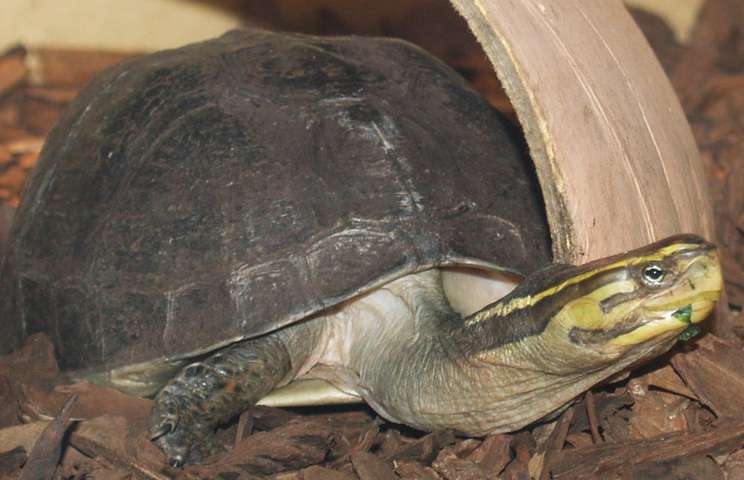
One of the two types of terrestrial turtles that are native to the central United States is the ornate box turtle. They have an upper shell that has a domed shape and is brown with yellow lines that are occasionally characterized as having a starburst pattern. Their heads may be green, and their skin is dark gray with white or yellow patches. One of the most popular turtle species to keep as pets is the ornate box turtle. They are therefore frequently simple to locate at breeders and rescue groups. They have relatively complicated nutritional and housing requirements. They can live for many decades in the ideal circumstances.
Care as a Pet

Housing
Ornate box turtles thrive in outdoor habitats and frequently experience health problems when housed only indoors. They require a sizable cage with adequate space for movement and a tall fence to prevent them from scaling it to escape. (They may move slowly, but they enjoy climbing.) Include a variety of hiding spots in your turtle’s enclosure, such as logs or planks. Additionally, dig a deep hole for your turtle to burrow in thick, loose peaty soil or leaf litter. Add a shallow pan of water as well for drinking and soaking.
Make sure the enclosure has both sunny and shaded sections so your turtle can bask for extended periods of time while also having a place to cool off.
Heat
Ornate box turtles like daytime highs of 80 to 88 degrees Fahrenheit and evening lows of 70 to 75 degrees. Make sure there is shade available throughout the day, especially in the summer. For chilly days or enclosed spaces, a heat lamp can add extra heat. Use of a hot rock should be avoided to prevent burns.
Humidity
Box turtles with ornaments prefer a humidity level of between 40% and 50%. Since they often burrow in moist soil to create their own humid microclimate in the wild, it’s crucial to give them a substrate layer in their enclosure that is at least 4 inches thick. It is advised to spray the enclosure frequently.
Feed
Because they are omnivores, ornate box turtles need a diversified diet. Pinky mice, calcium-dusted crickets, mealworms, waxworms, and earthworms should all be staples in the diet of the ornate box turtle. Grasses, various vegetables and fruits, as well as dark leafy greens, are also acceptable. Feed turtles in a protected place if they seem anxious about eating in the open. In order to prevent them from unintentionally ingesting their substrate, it is also advisable to lay the food on a plate, paver, or other flat surface.
Table





